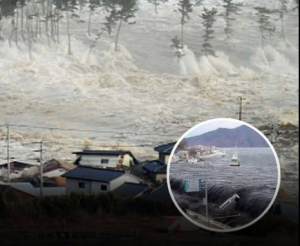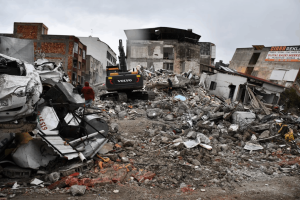Scientists and government officials are worried about the possibility of a huge earthquake happening in the Nankai Trough, which is a huge fault line that runs for around 500 miles along Japan’s Pacific coast. Japan is on edge. The Japanese government now says there is a 75–82 percent chance that a big earthquake will hit this area in the next 30 years. This possibility has worried both average people and specialists. It’s hard to picture how bad this disaster may be: up to 300,000 people could die, largely from the quake and the wave that comes after it, and the economy could lose up to $2 trillion.
In January, a government group put up a new catastrophic scenario based on these estimates. The stats are worse than they have ever been. Japan’s disaster preparedness strategy for 2014 aimed to minimize the number of possible deaths by 80% by making buildings safer and putting emergency procedures in place. But new evaluations reveal that these measures might only lower the number of predicted deaths by 20% under current conditions. That news has made people at all levels of society want things to happen faster.

To that purpose, the government intends to develop additional evacuation facilities, build embankments that can survive tsunamis, and organize a lot more community catastrophe exercises. Prime Minister Shigeru Ishiba has asked everyone in the country to work together. He said, “Every minute of preparation now could mean hundreds of lives saved later.” He went on to remark that the most essential thing the government can do is preventing another calamity like the 2011 Tōhoku earthquake and tsunami, which killed more than 15,000 people and sparked the Fukushima nuclear issue.
There have been a lot of earthquakes in the Nankai Trough. It has triggered severe earthquakes every 100 to 200 years for the past 1,400 years. The last huge break was in 1946, thus the area could be due for another big event shortly. The Japan Meteorological Agency (JMA) briefly warned in 2024 that there was increased seismic activity in the area, but they later said they didn’t have enough data to back it up. Still, fears have stayed strong and are getting worse.

A viral manga comic that came out earlier this year says that a massive earthquake would happen on July 5, 2025. This is making people even more scared. Even though the comedy is clearly fake, it has changed how people act in a big way. A lot of people have been talking and worrying about it on social media, and a number of visitors, notably those from Hong Kong, have changed or canceled their plans to go to Japan this summer. The number of tourists from South Korea and mainland China, on the other hand, has kept going up. This shows that individuals in different sections of the area are reacting in different ways.
At a recent press conference, JMA director Ryoichi Nomura tried to calm people’s fears by saying that while long-term probability are scientifically sound, short-term earthquake prediction is still not possible. He advised them not to freak out and instead to get ready. He said, “No one knows exactly when or where a big earthquake will hit.”
The memory of the disaster in 2011 still motivates both the government and the people, even though scientists don’t know what happened. The 9.0-magnitude earthquake and the tsunami that followed destroyed a lot of northeastern Japan. It caused a humanitarian and nuclear calamity that took years to fix. Experts now predict that a Nankai Trough quake of the same size or worse may wreak a lot more damage because it is close to vital industrial zones and densely populated coastal districts.
Japan has some of the best procedures in the world for getting ready for disasters, yet it still has a significant problem with a danger like this. The most important question right now is whether the government, towns, and people can work together quickly enough to stop what could be Japan’s biggest natural tragedy in modern history.
